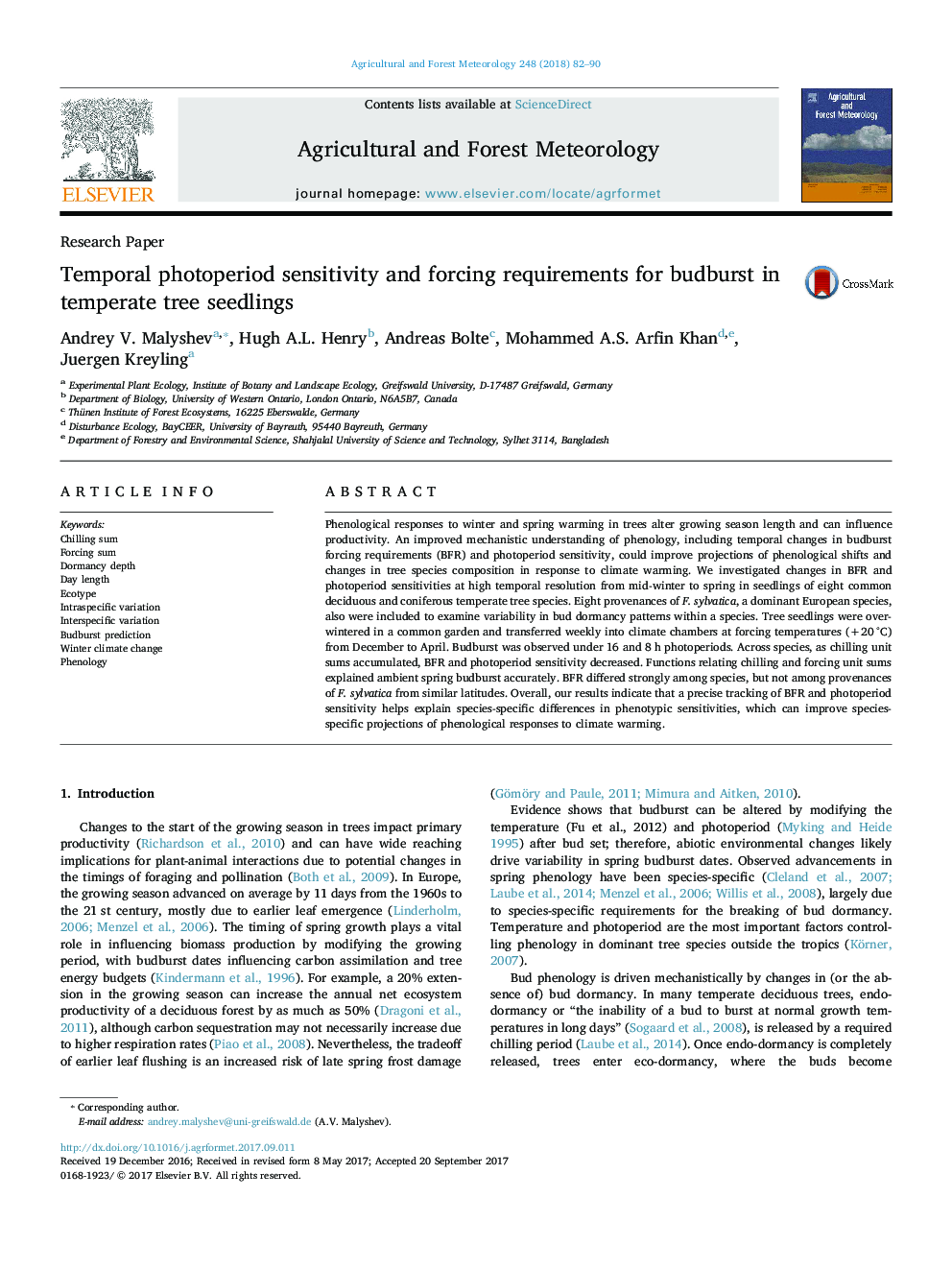| Article ID | Journal | Published Year | Pages | File Type |
|---|---|---|---|---|
| 4758869 | Agricultural and Forest Meteorology | 2018 | 9 Pages |
â¢Chilling and forcing unit accumulations accurately project spring bud burst.â¢Photoperiod sensitivity of budburst decreases from winter to spring across species.â¢Novel patterns of bud burst forcing requirements were detected for some species.
Phenological responses to winter and spring warming in trees alter growing season length and can influence productivity. An improved mechanistic understanding of phenology, including temporal changes in budburst forcing requirements (BFR) and photoperiod sensitivity, could improve projections of phenological shifts and changes in tree species composition in response to climate warming. We investigated changes in BFR and photoperiod sensitivities at high temporal resolution from mid-winter to spring in seedlings of eight common deciduous and coniferous temperate tree species. Eight provenances of F. sylvatica, a dominant European species, also were included to examine variability in bud dormancy patterns within a species. Tree seedlings were over-wintered in a common garden and transferred weekly into climate chambers at forcing temperatures (+20 °C) from December to April. Budburst was observed under 16 and 8 h photoperiods. Across species, as chilling unit sums accumulated, BFR and photoperiod sensitivity decreased. Functions relating chilling and forcing unit sums explained ambient spring budburst accurately. BFR differed strongly among species, but not among provenances of F. sylvatica from similar latitudes. Overall, our results indicate that a precise tracking of BFR and photoperiod sensitivity helps explain species-specific differences in phenotypic sensitivities, which can improve species-specific projections of phenological responses to climate warming.
